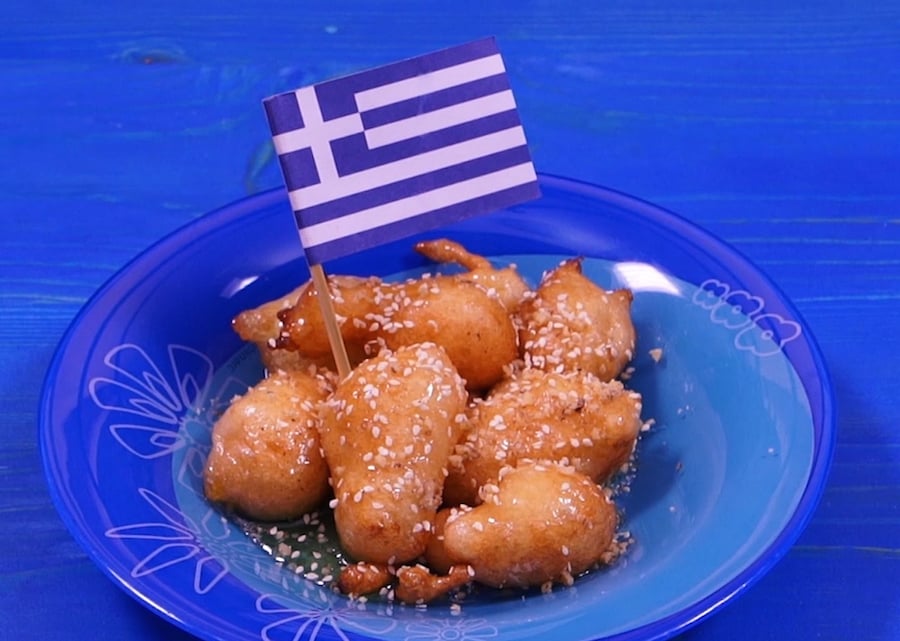Source: greekreporter.com
Greek sweets are famously decadent and delicious. There are a number of traditional sweets that remind Greeks of bygone days, when kids enjoyed carnivals and fairs.
Old lady’s hair, or cotton candy
Old lady’s hair is a timeless treat that is known as cotton candy (United States, Canada), fairy floss (Australia), candy floss (England) and dragon’s beard (China).
No matter what you call it, there’s no denying that this spun sugary delight conjures images of childhood joy.
The dessert was developed in the Medieval era at a time when sugar was rare and expensive.
Back in those days, only knights and damsels could afford the sugary treat, and very few people got to taste it. Early chefs spun different shapes from it, including dragons, castles and mythical creatures.
Fast forward centuries later, and fairy floss became a staple for children in Greece and around the world. Associated with feasts, fairs, amusement parks and the circus, mass production of fairy floss machines were welcomed by Greek youngsters.
Loukoumades, the traditional Greek sweet

Loukoumades are heavenly fried dough, served warm with honey and drizzled with walnuts and cinnamon or – if you like – sesame seeds.
The oldest recorded dessert in the world was first served to the winners of the Greek Olympics, according to Greek poet Callimachus who referred to them as “honey tokens”.
In later years, loukoumades became a representative of Greek Cucina Povera (Kitchen of the poor) because of the easily accessible ingredients that would give joy to children with a bit of flour and sugar during the Nazi Occupation and post-war years.
Now, widely accessible as a street food, loukoumades have been elevated to a gourmet level and are filled with nutella, vanilla and all sorts of different flavors… but – despite development – there’s nothing like the traditional, original and simple loukoumades of times past.
Pasteli

These chewy Greek honey sesame sticks were once a staple in every Greek pupil’s lunch box.
One of the easiest Ancient Greek recipes to cook, it is mass produced and readily accessible at any Greek kiosk or supermarket.
It can be made using different types of nuts, however, it is the quality of the honey that makes or breaks the recipe.
Kokoraki Lollipops are a beloved Greek sweet
While the kids in the rest of the world were sucking on various-flavored lollipops, Greek kids hankered for red “kokkoraki” (roosters) lollipops.
An iconic red lollipop flattened out into a rooster shape, though other animals were also offered.
The staple, which was sold at every Greek fair, like “old lady’s hair” and pop-corn, was created by the Sotiriadis family of Greek lollipop-makers who made their way to Greece from Asia Minor in 1922.
Their first confectionery workshops were in Nikaia, Piraeus, but they later spread to other regions. By the eighties, they were churning out these lollipops and other children’s desserts including the dummy lollies (edible baby pacifier-shaped lollipops).
Astakos (lobster) Lollies
Back in the day, every Greek kid would sneak some astakos lollies in their pockets. A hit with youngsters, these hard lollies were filled with explosive surprises such as chocolate or coconut cream.
Children would suck on these delights for what seemed like ages. The goal was to get to the syrupy center and there were often mishaps as kids squished these oversized sweets in their mouths and ended up with sticky hair and syrup down the front of their clothes.
Tam Tam, the Greek cola
What better way to wash down all of the above than with Tam Tam, a very famous Greek fizzy drink which was extremely popular before the introduction of Coca Cola to the Greek market.
Produced by the Fix Brewery, this drink caught on and cinemas around the country would announce the intermission by stating, “A break for some Tam Tam.” The import of Coca Cola brought an end to the reign of Tam Tam.












